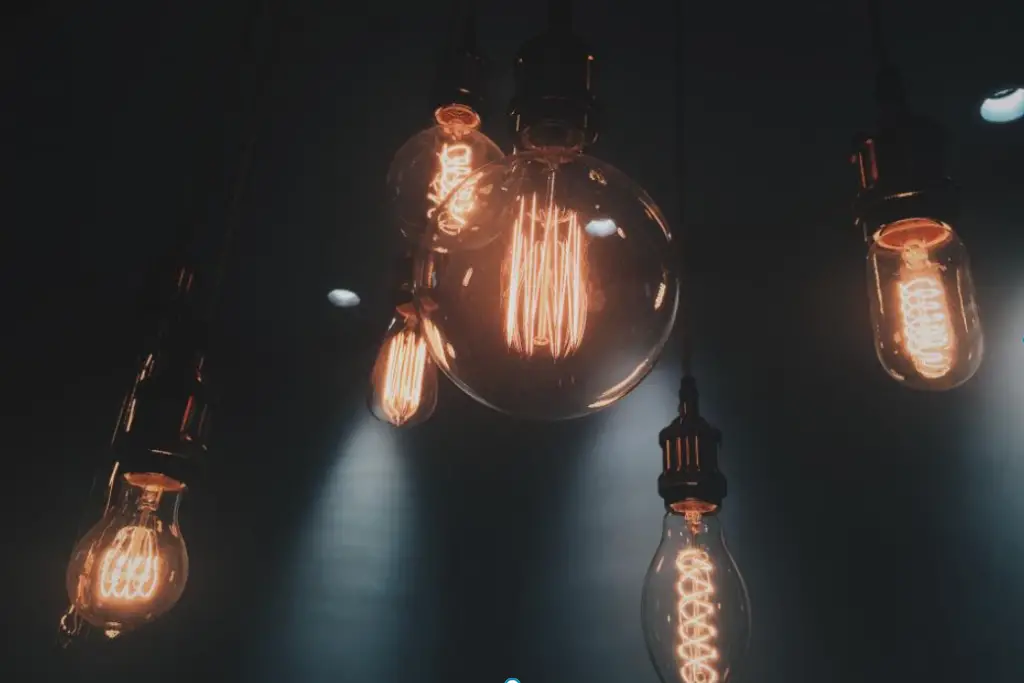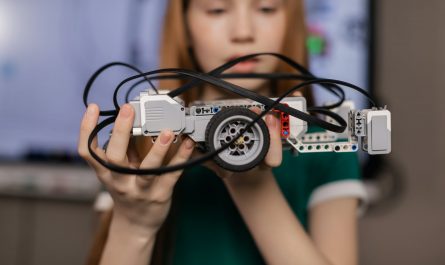Electricity is an essential part of modern society. It powers our homes, businesses, and the technology that we rely on every day. However, many people do not fully understand what electricity is or how it works.
In this article, we will explore some of the most interesting truth about electricity that you may not have known before. From its discovery to technological advancements and energy production and consumption, there is a lot to uncover.
Contents
Definition of Electricity
At its core, electricity is simply the flow of electric charge through a conductive medium such as a wire or circuit. This flow can occur naturally in phenomena such as lightning or artificially through devices such as batteries or generators. It is measured in units called amperes and can be used to power electrical devices by converting it into other forms of energy such as light or heat.
Importance of Electricity in Modern Society
The importance of electricity cannot be overstated when it comes to modern society. Virtually all aspects of our lives rely on some form of electrical power whether it’s lighting our homes, powering our computers and smartphones or running complex machines at industrial facilities. Without electricity, many things that we take for granted would simply not exist.
Electricity plays an integral role in healthcare as well with everything from life support systems to X-ray machines requiring a reliable source of power. Consider how difficult it would be for hospitals to provide quality care without access to consistent electrical power.
Overview of Interesting Truth about Electricity
Now that we have established what electricity is and its importance in modern society let’s delve into some fascinating facts about this versatile form of energy: – Lightning strikes the earth approximately 100 times per second – Electric eels can generate up to 600 volts of electricity
– The human body can conduct small amounts of electricity – The world’s largest battery is located in South Australia and has the capacity to power 30,000 homes for an hour.
These are just a few examples of the many interesting facts about electricity that exist. As we continue to explore, you may be surprised by just how many ways electricity impacts our lives.
Historical Facts
Electricity has been a part of human history for thousands of years, but it wasn’t until the 18th century that significant progress was made in understanding and harnessing its power. Here are some interesting historical facts about electricity:
Discovery of electricity by Benjamin Franklin
One of the most well-known figures in the history of electricity is Benjamin Franklin. In 1752, he famously conducted his kite experiment, which demonstrated that lightning was an electrical phenomenon.
Although he didn’t quite understand the underlying principles behind his experiment at the time, his discoveries laid the foundation for future research in this field. In addition to his kite experiment, Franklin also invented the lightning rod, which helped protect buildings from lightning strikes and made it possible to harness some of its energy.
Invention of the first electric battery by Alessandro Volta
Alessandro Volta was an Italian physicist who is credited with inventing the first electric battery in 1800. His invention consisted of stacked discs made out of different metals and separated by brine-soaked cardboard disks.
This arrangement created a flow of electrons from one metal to another, generating a small but steady electrical current. The invention of Volta’s battery was a major milestone in electrical technology as it provided a reliable source of electricity for experimentation and later practical applications such as telegraphs and other communication devices.
The role of Michael Faraday in the development of electrical technology
Michael Faraday was an English scientist who made significant contributions to our understanding of electromagnetism during the 19th century. He discovered electromagnetic induction – which showed that moving magnets could create an electric current – laying the groundwork for generators and motors used today.
In addition to his work on electromagnetism, Faraday also invented the first electric motor, which used a magnetic field to produce motion. His discoveries revolutionized the way we think about electricity and helped pave the way for many of the devices we use today.
Overall, these historical figures played important roles in advancing our understanding of electricity and developing practical applications for its use. Their contributions have had a lasting impact on our society and continue to shape the world we live in today.
Fun Facts
When Nature Strikes
Electricity seems to be everywhere around us, even in nature. One of the most impressive displays of this power is lightning.
Every second, it’s estimated that lightning strikes the earth approximately 100 times per second! This equates to roughly 8 million lightning bolts per day worldwide.
While these bolts can be beautiful and awe-inspiring, they can also be incredibly dangerous, causing property damage and even fatalities. Lightning is generated by electric charges within a thunderstorm cloud.
These charges can become separated and create both negative and positive areas within the cloud itself. When the difference in charge gets large enough, a spark or bolt of electricity is released between these areas or between the cloud and Earth’s surface.
Electrifying Creatures
Did you know that there are creatures in nature that generate electricity as part of their biology? One such example is the electric eel.
Despite its name, it’s actually more closely related to catfish than true eels. Electric eels can generate up to 600 volts of electricity – enough to shock and stun prey or deter predators.
The electric eel has three pairs of organs called electrocytes that are used to produce these electrical discharges. When hunting for food, they will emit high-frequency bursts which cause nearby prey animals’ muscles to contract involuntarily, making them easier targets.
The Body Electric
It’s not just creatures like electric eels that have electrical properties – our own bodies do too! The human body conducts small amounts of electricity through nerve signals sent between cells and muscle contractions. In fact, medical professionals use electrical signals in various ways for diagnosis and treatment.
Electrocardiograms (ECGs) measure the electrical activity of your heart to detect any abnormalities while electroencephalograms (EEGs) measure the electrical activity of your brain to diagnose conditions like epilepsy and sleep disorders. While we may not generate electricity on the same scale as electric eels or lightning bolts, it’s fascinating to think about the ways in which electricity plays a role in both nature and our own bodies.
The Production and Consumption of Electricity
Most Common Sources for Energy Production
Electricity is generated from a variety of sources, but the most common sources are coal, natural gas, nuclear, and renewable energy. Coal has been the traditional source of electricity for decades because it is abundant and cheap.
However, coal is also one of the dirtiest sources of energy due to its high carbon content, which contributes significantly to global warming. Natural gas is now becoming more common because it produces about half as much carbon dioxide as coal when burned.
Nuclear energy has also been an important source of electricity since the 1950s but faces safety concerns due to potential catastrophic accidents. Renewable energy sources such as wind power and solar power are becoming increasingly popular due to their clean nature.
Amount of Energy Consumed by Households and Industries Worldwide
The amount of energy consumed worldwide has been steadily increasing due to population growth and industrialization. According to International Energy Agency (IEA), total global electricity consumption reached around 23,000 TeraWatt-hours (TWh) in 2018.

The United States is responsible for roughly 15% of that consumption on its own, with China coming in at a close second at about 13%. More than half (58%) comes from developed countries while developing countries consume less than a third (32%).
In terms of household consumption alone, heating and cooling systems are among the largest contributors to household electric bills accounting for up to 50% or more depending on location. Other large energy consumers include lighting systems (25%), appliances (13%), water heating systems (12%), computers/ electronics(10%)and others.
Energy Efficiency and Conservation Tips
With increasing concerns about climate change caused by greenhouse gases emitted from burning fossil fuels in generating electricity usage reduction becomes critical for both industries as well as households. One way to conserve energy is through the use of energy-efficient appliances.
Such appliances are designed to reduce the amount of energy consumed by a typical device without compromising functionality. Smart thermostats that can adjust temperature settings automatically and efficient light bulbs with LED technology have all been shown to reduce electricity consumption significantly.
Another way to reduce electricity consumption is by practicing good habits such as turning off lights and electronics when not in use or choosing low power modes, unplugging phantom loads, reducing hot water usage and drying clothes on washing lines instead of using a dryer. Several governments offer incentives for companies or households that adopt measures aimed at reducing their energy footprint.
Electricity production and consumption trends continue to evolve over time as new technologies emerge, and environmental concerns become more prominent. By understanding the most common sources of electricity production, global consumption patterns, and ways in which we can increase efficiency or conserve power altogether, we can make an impact on one of our world’s most crucial resources while also saving money at the same time.
Technological Advancements
The Invention and Evolution of Light Bulbs

Electric light bulbs have come a long way since Thomas Edison invented the first practical incandescent light bulb in 1879. Edison’s design, which consisted of a carbon filament inside a glass bulb that was vacuum-sealed and filled with an inert gas, revolutionized both indoor and outdoor lighting.
However, incandescent bulbs are inefficient since they waste too much energy as heat. Today, we have more energy-efficient options such as compact fluorescent lamps (CFLs) and light-emitting diodes (LEDs).
CFLs use about 75% less energy than incandescent bulbs while LEDs use about 80% less energy. LED lights are also much more durable than other types of lights.
The Development and Use of Solar Panels for Energy Production
The sun is an abundant source of clean and renewable energy that can be converted into electricity using solar panels. The concept of using solar panels dates back to the 19th century when French scientist Edmond Becquerel discovered the photovoltaic effect, which is the principle behind how solar cells work.
Today, solar panels are becoming increasingly common in households and industries worldwide. They consist of photovoltaic cells made from silicon or other materials that convert sunlight into electricity.
Solar panel systems can help reduce electricity bills and carbon emissions. Moreover, they require little maintenance compared to traditional power plants.
Electric Cars: How They Work and Their Benefits
An electric car is a vehicle that runs on electricity stored in batteries instead of gasoline or diesel fuel. Electric cars are becoming popular due to their environmental benefits such as reduced greenhouse gas emissions compared to conventional cars.
Electric cars work by using an electric motor powered by rechargeable batteries instead of a gasoline engine. The batteries store electrical energy that powers the motor, which in turn powers the wheels.
When the batteries run low, they can be recharged by plugging into a charging station or wall outlet. Benefits of electric cars include lower fuel costs, reduced air pollution and maintenance costs.
However, their higher upfront cost may deter some consumers from purchasing them. Nevertheless, governments are offering incentives to promote the growth of the electric vehicle market.
Conclusion
Summary on Interesting Truth about Electricity
Electricity is an essential part of modern life. From lighting our homes to powering the devices we rely on every day, it plays a crucial role in our daily lives.
In this article, we explored several interesting facts and historical events related to electricity. We learned about the discovery of electricity by Benjamin Franklin and the invention of the first electric battery by Alessandro Volta.
We also discovered some fun truth about electricity, including how lightning strikes our planet 100 times per second and how electric eels can generate up to 600 volts of electricity. Furthermore, we explored energy production and consumption with a focus on common energy sources such as coal, natural gas, nuclear power, and renewable energy.
By looking at how much energy households and industries consume worldwide, we gained insight into the importance of energy efficiency and conservation. We looked at technological advancements in electrical technology such as light bulbs’ evolution from incandescent to LED bulbs.
We also saw how solar panels are becoming more widely used for energy production due to their environmental benefits. We discussed electric cars’ development and benefits as an emerging technology that may play a crucial role in reducing carbon emissions from transportation.
Future Prospects in Electrical Technology
The future looks bright for electrical technology as experts work towards developing more efficient ways to generate and distribute electricity while also minimizing environmental impact. For instance, scientists are exploring new ways of producing renewable energy through harnessing wind power or building more advanced solar panels capable of converting sunlight into even more electrical power.
Additionally, advancements in battery technology will allow us to store more renewable energy efficiently for use when there is no sunlight or wind available for conversion into electrical power. Moreover, the rise of electric cars represents a significant shift towards greener transportation solutions that could help reduce carbon emissions significantly – assuming renewable energy powers their charging stations.
Electrical technology is rapidly evolving, and the above developments could help us transition to a new era of cleaner, more sustainable energy. As society becomes increasingly aware of the need for environmental sustainability, we must rely on smarter technology to meet our energy needs while reducing our carbon footprint.





